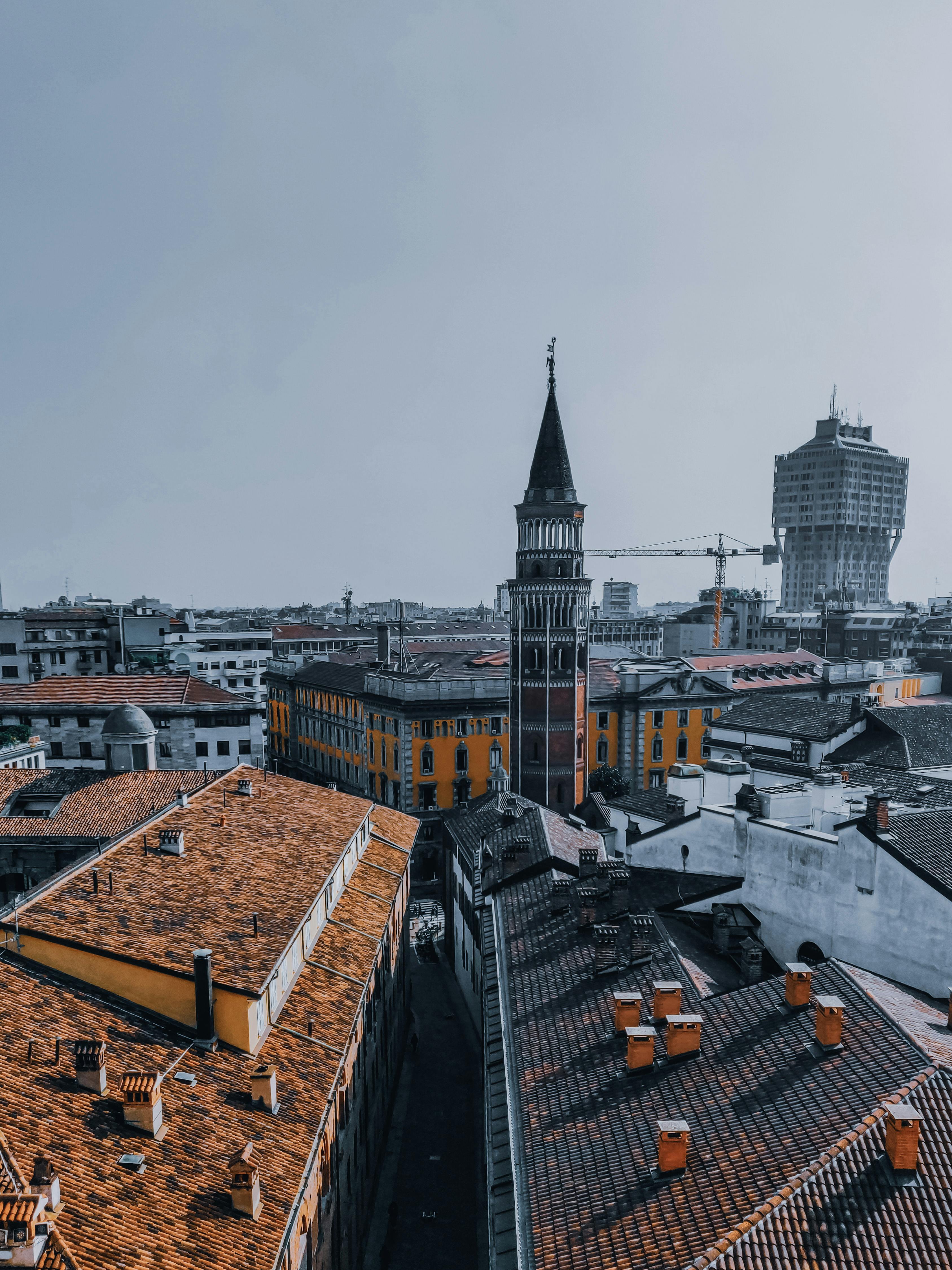Milan boasts a record which perhaps most people are unaware of. The world's first public clock was installed in the bell tower of one of its churches. If you look to the right of the Duomo and then turn your gaze upwards, you will see the bell tower of the church of San Gottardo in Corte. No hands are visible: the people of 14th century Milan relied on the tolling of its bell to mark out their days. The system, which was very advanced for its time, confirms Milan's pioneering character and the city's special consideration of the value of time, as evidenced by its clocks.
The Church of San Gottardo in Corte: a journey into the history of Milan
Built in 1336 at the behest of the Lord of Milan Azzone Visconti, the church was dedicated to St Gotthard, the patron saint of those affected by ailments from which Visconti himself apparently suffered, kidney stones and gout.
Built as a palatine chapel, it is located just behind Palazzo Reale and is included in the itinerary of the Great Museum of Milan Cathedral. The architectural structure, designed by Francesco Pecorari, consists of a single hall culminating in a semi-octagonal apse, which has remained unchanged since the 14th century despite the renovations that have taken place throughout the church's history and have radically altered its exterior and interior appearance.
The bell tower, on the other hand, retains its original layout: it is home to the first public timepiece, which is not visible from the outside but holds a special place in the history of Milan.
The bell tower and the measurement of time
The bell tower of the Church of San Gottardo in Corte in Milan retains all its 14th-century charm: just look up to the sky to admire its octagonal red-brick structure decorated with elegant columns.
Azzone Visconti had a clock without a face, or rather, a mechanism that activated the tolling of a bell, beginning at sunset and for the next 24 hours, installed on the bell tower. Galvano Fiamma (1283 - 1344), a thorough chronicler from Milan, reported the workings of the innovative clock and its impact in his writings. The clock was of such importance in the
life of the people of Milan that the bell tower became known as the “Campanile delle Ore” (the Belltower of the Hours), the street next to it became known as “via delle Ore” (the street of the Hours) and the whole area as “contrada delle Ore” (the district of the Hours).
Today, of course, we can rely on much more precise time-measuring instruments, but we should not forget the influence that the public clock had on the daily life of the people of Milan in the 14th century: the pace of work and all the activities of the day were marked, organised and structured with an accuracy that had never been seen before.
Even with a watch on your wrist, you cannot remain immune to the fascination and history of public timepieces that, from that moment on, began to appear on the façades of Milan's bell towers and churches, starting with the clock in the bell tower of Sant'Eustorgio, dating back to 1309. Although predating the clock in the Church of San Gottardo and having a clock face, this clock had far less impact on people's lives because it was silent, with no bell: the vibrations of the chimes would have compromised the precision of the delicate mechanism.
The ancient terracotta face of the clock in Chiaravalle Abbey, the two clocks in the Church of Sant'Alessandro in Zebedia, one of which however is a painting, the timepiece on the façade of the Veneranda Fabbrica del Duomo, behind the cathedral, and the clock inside the Galleria Vittorio Emanuele are just some of the public clocks that can be admired in the city.
A step back in time: the invention of the clock
But who invented the clock? The answer deserves an in-depth study with a special focus on the type of clock because its history is quite complex. In short, we owe the invention of the clock, understood as an instrument for measuring and marking time, to a series of discoveries and technological innovations that have led from the sundials of the ancient Egyptians to our sophisticated wristwatches with their absolute precision.
In artistic representations, from paintings to film, the significance of the watch has always evoked the fleeting nature of time and the transience of man.

